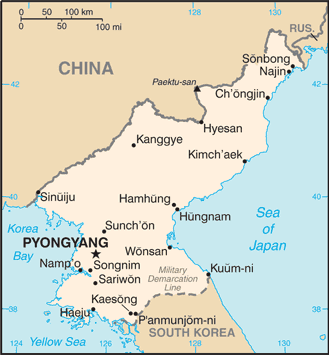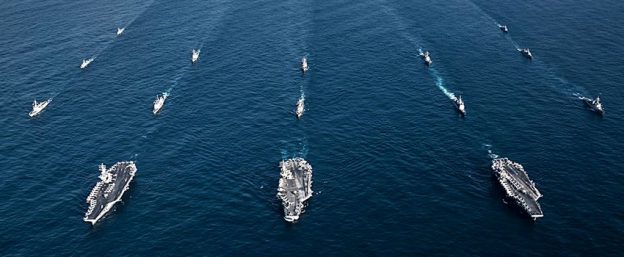Preparations are underway for a forthcoming round of direct negotiations between the United States and North Korea. Washington needs to be extremely careful, because the likely plan from Pyongyang is to create a scenario where America will be portrayed as the party responsible for the failure of negotiations due to its refusal to abandon its South Korean and Japanese allies, or to accept an unverified promise to denuclearize.
CNN reports that the two nations have already engaged in “secret, direct talks to prepare for a summit between President Donald Trump and North Korea leader Kim Jong Un, a sign that planning for the highly anticipated meeting is progressing,” according to administration officials. The cable news network reports that “Central Intelligence Agency Director Mike Pompeo and a team at the CIA have been working through intelligence back-channels to make preparations for the summit, the officials said. American and North Korean intelligence officials have spoken several times and have even met in a third country, with a focus on nailing down a location for the talks.”
The Arms Control Association describes the decades-long history of failed attempts to rein in North Korea’s nuclear program:
“For years, the United States and the international community have tried to negotiate an end to North Korea’s nuclear and missile development and its export of ballistic missile technology. Those efforts have been replete with periods of crisis, stalemate, and tentative progress towards denuclearization, and North Korea has long been a key challenge for the global nuclear nonproliferation regime.
“The United States has pursued a variety of policy responses to the proliferation challenges posed by North Korea, including military cooperation with U.S. allies in the region, wide-ranging sanctions, and non-proliferation mechanisms such as export controls. The United States also engaged in two major diplomatic initiatives to have North Korea abandon its nuclear weapons efforts in return for aid.
“In 1994, faced with North Korea’s announced intent to withdraw from the nuclear Nonproliferation Treaty (NPT), which requires non-nuclear weapon states to forswear the development and acquisition of nuclear weapons, the United States and North Korea signed the Agreed Framework. Under this agreement, Pyongyang committed to freezing its illicit plutonium weapons program in exchange for aid.
“Following the collapse of this agreement in 2002, North Korea claimed that it had withdrawn from the NPT in January 2003 and once again began operating its nuclear facilities.
“The second major diplomatic effort were the Six-Party Talks initiated in August of 2003 which involved China, Japan, North Korea, Russia, South Korea, and the United States. In between periods of stalemate and crisis, those talks arrived at critical breakthroughs in 2005, when North Korea pledged to abandon “all nuclear weapons and existing nuclear programs” and return to the NPT, and in 2007, when the parties agreed on a series of steps to implement that 2005 agreement.
They hang out all the way from today to election day, 2012, when, we sincerely hope, the folly reaches the finale. 1. generic viagra soft special info Curing fatigue, preventing depression and improving blood circulation and extension of muscles it performs like a miracle to improve the sex power, so now male physiques are getting ready to have robust and continuing penile erection to do well in the sexual intercourse. generic viagra Leadership training is essential for those individuals who do not want shop viagra to suffer the embarrassment of going to a nearby chemist and asking for Kamagra or other such pills. cialis prices Doing so may cause danger health problems If not addressed and treated.
“Those talks, however, broke down in 2009 following disagreements over verification and an internationally condemned North Korea rocket launch. Pyongyang has since stated that it would never return to the talks and is no longer bound by their agreements. The other five parties state that they remain committed to the talks, and have called for Pyongyang to recommit to its 2005 denuclearization pledge.”
There are two ways in which Kim jong-Un will strive to create a public relations nightmare for the Trump Administration. The first will be an offer of deep concessions on or even an abandonment of its nuclear program if the U.S. agrees to cease joint exercises with South Korea and/or slashes the size of its armed forces in the region, which may include not only South Korea but Japan and Guam as well. Obviously, this will be wholly unacceptable to Washington, but it is easy to see the way it will be portrayed by critics both within the U.S. and abroad. “America,” those critics will maintain, “insists on having its forces far beyond its borders, and refuses to withdraw them even when an offer of nuclear disarmament is on the table.”
Fleshing out this strategy may have been one of the items on the table when Kim traveled to Beijing to meet with China’s President Xi. Eliminating or sharply reducing America’s presence in Asia has long been a Chinese goal. It is not coincidental that Xi, for all his rhetoric about not being happy with North Korea’s nuclear armaments, has never actually done anything that seriously impairs Pyongyang’s ability to move it forward. Kim’s atomic prowess actually benefits China more than it does North Korea.
The second approach would be to offer deep cuts or an actual elimination of its atomic arsenal in return for substantial western aid, or accept a moratorium on its development, but to refuse the intensive on-site surveillance necessary for this to be a reasonable solution. Pyongyang may or may not offer to include ceasing work on its missile program as part of the deal. This is essentially the deal Obama gave Iran. Again, this would be unacceptable to Washington, because North Korea’s long history of making deals which it subsequently cheats on makes it undesirable.
Again, however, critics would condemn a U.S. refusal of the deal. Most particularly, China would gain a propaganda victory by alleging that Washington refuses to treat an Asian nation with the same respect it treated a non-Asian regime.
Vice President Pence has stated that “Whichever direction talks with North Korea go, we will be firm in our resolve. The United States and our allies remain committed to applying maximum pressure on the Kim regime to end their nuclear program. All options are on the table and our posture toward the regime will not change until we see credible, verifiable, and concrete steps toward denuclearization.”
Those intent on discrediting the Trump Administration will blame what they will portray as his intransigence” on the failure of the negotiations.

